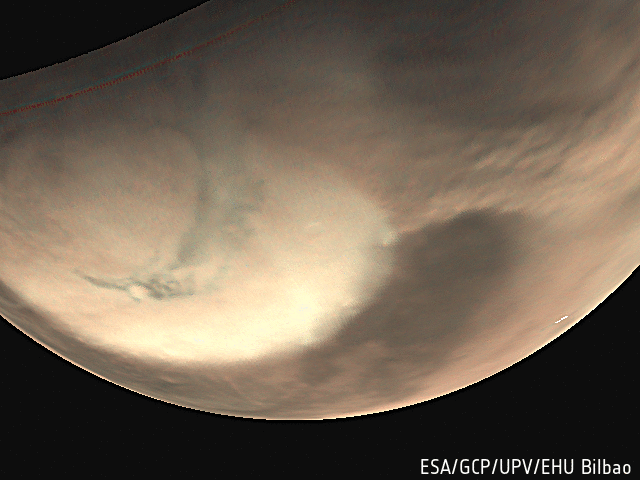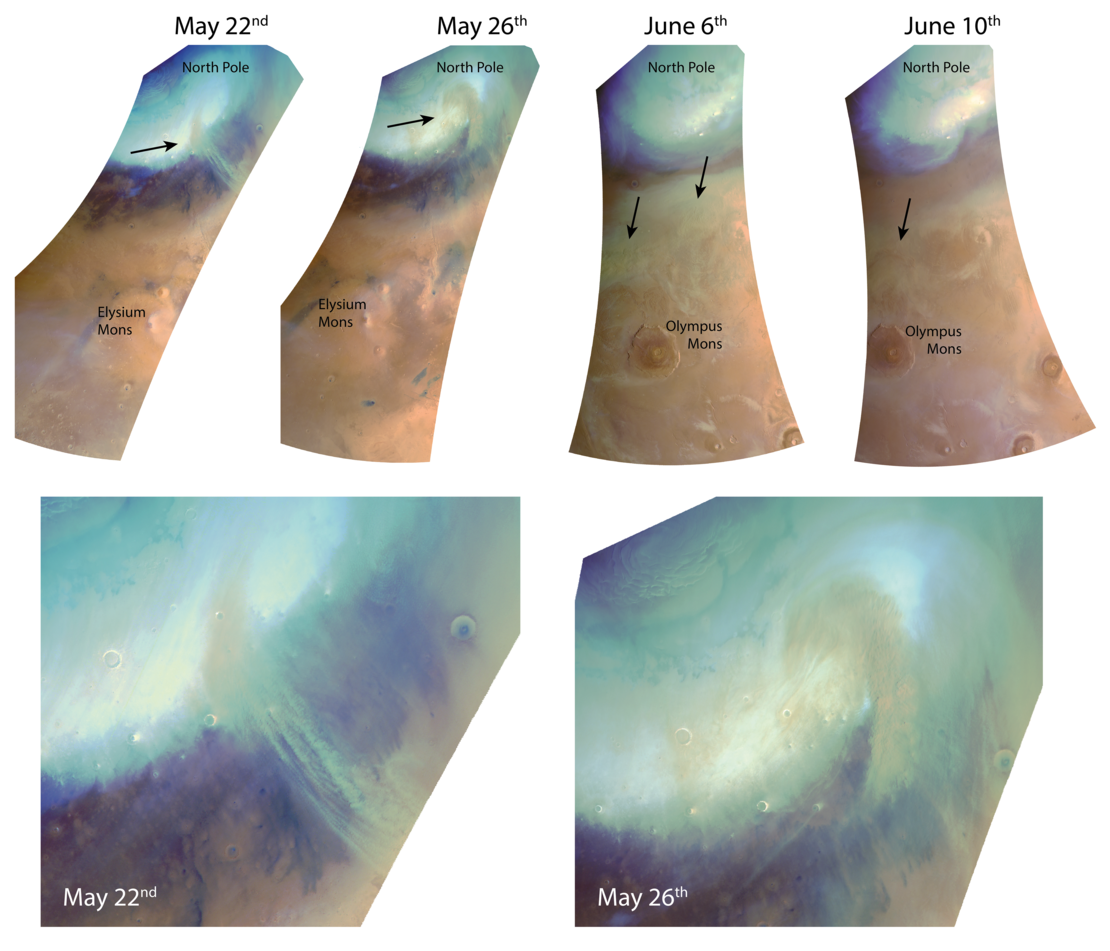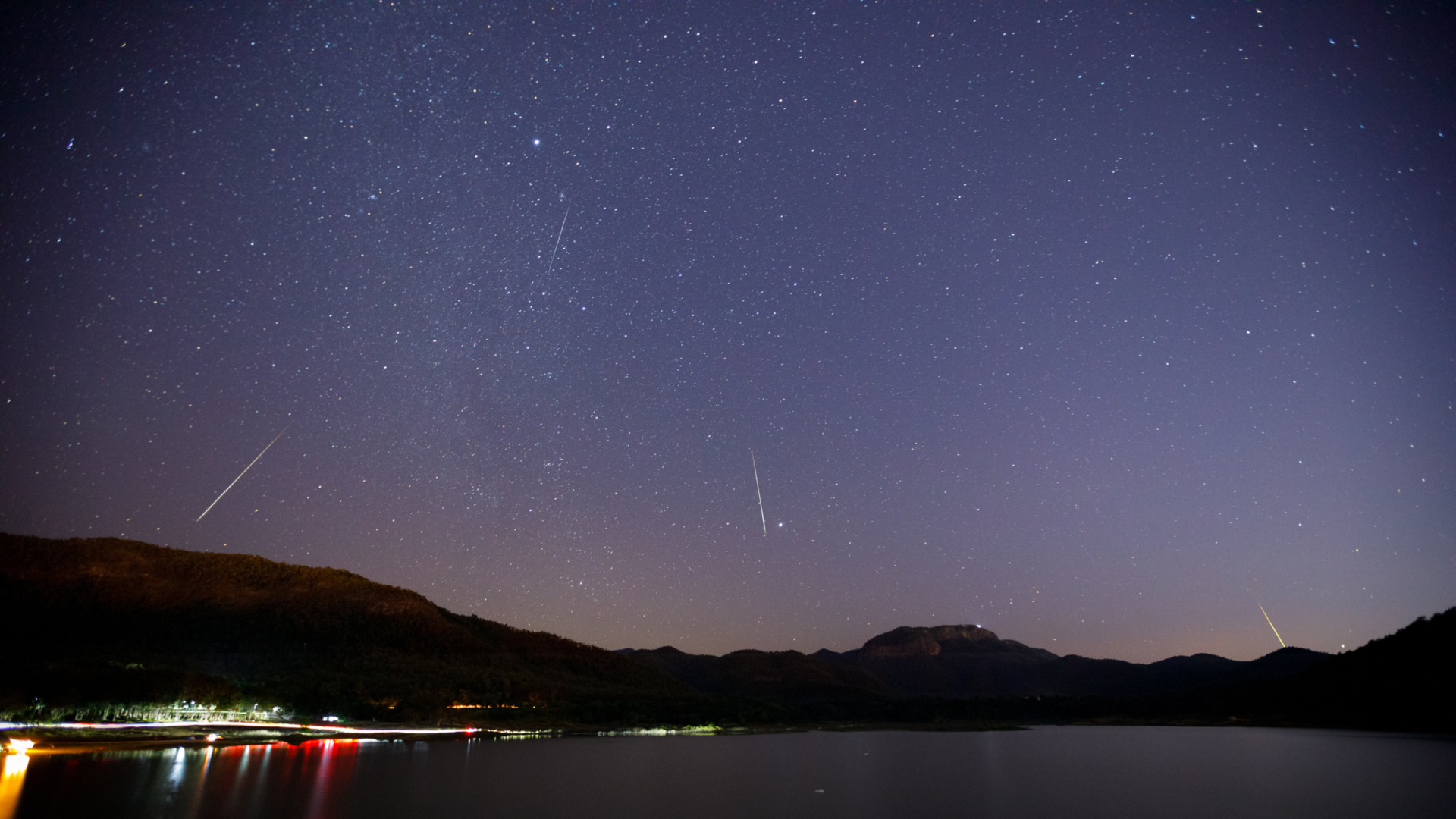Red Planet Dust Storms Rage in Mars Express Photos

It's dust-storm season in northern Mars, as a series of newly released photos makes very clear.
The European Space Agency's (ESA) Mars Express orbiter captured dramatic imagery of multiple storms swirling near the Red Planet's north pole over the past few months.
"It is currently spring in the northern hemisphere of Mars, and water-ice clouds and small dust-lifting events are frequently observed along the edge of the seasonally retreating [polar] ice cap," ESA officials wrote Thursday (July 4) in a statement accompanying the photos.
Mars Express "observed at least eight different storms at the edge of the ice cap between 22 May and 10 June, which formed and dissipated very quickly, between one and three days," the officials added.
Such storms aren't always so short-lived and limited in reach. Last summer, a Martian dust storm flared up near the equator and soon went global, blanketing the entire Red Planet for weeks. The thick dust pall deprived NASA's solar-powered Opportunity rover of sunlight, bringing an end to the robot's long and accomplished mission.
Some of the newly released Mars Express imagery shows the recent regional storms heading south, from the ice cap's margin toward the huge volcanoes Olympus Mons and Elysium Mons.
When the storms reached these volcanoes, clouds in the area "that had previously been developing started to evaporate as a result of the air mass being heated by the influx of dust," ESA officials wrote.
Breaking space news, the latest updates on rocket launches, skywatching events and more!
Mars Express arrived in orbit in December 2003, just a few weeks before Opportunity and its twin, Spirit, hit the red dirt.
- Photos: Red Planet Views from Europe's Mars Express
- Mars Myths & Misconceptions: Quiz
- Mars Dust Storm 2018: How It Grew & Killed the Opportunity Rover
Mike Wall's book about the search for alien life, "Out There" (Grand Central Publishing, 2018; illustrated by Karl Tate), is out now. Follow him on Twitter @michaeldwall. Follow us on Twitter @Spacedotcom or Facebook.

Michael Wall is a Senior Space Writer with Space.com and joined the team in 2010. He primarily covers exoplanets, spaceflight and military space, but has been known to dabble in the space art beat. His book about the search for alien life, "Out There," was published on Nov. 13, 2018. Before becoming a science writer, Michael worked as a herpetologist and wildlife biologist. He has a Ph.D. in evolutionary biology from the University of Sydney, Australia, a bachelor's degree from the University of Arizona, and a graduate certificate in science writing from the University of California, Santa Cruz. To find out what his latest project is, you can follow Michael on Twitter.


